Aerodynamic Analysis of Rigid Wing Sail Based on CFD Simulation for the Design of High-Performance Unmanned Sailboats
Abstract
:1. Introduction
- (1)
- Low structural strength and a breakage in the sail surface will cause the sailboat to lose power completely.
- (2)
- Low lift coefficient: under ideal conditions, the lift coefficient of a flexible sail is between 0.6 and 0.7.
- (3)
- When the sail surface is in the side windward condition, it is easy for elastic deformation to take place.
2. Modeling of Rigid Wing Sails
2.1. Sail Selection
2.2. Parameter Definition
2.3. Simulation Model Establishment
3. Aerodynamic Study of Rigid Wing Sails
3.1. Force Analysis of the Wing Sail
3.2. Controlling Equations and Turbulence Models
3.3. Computational Fluid Domains and Meshing
4. Simulation Analysis of the Rigid Wing Sail
4.1. Simulation-Related Parameter Settings
4.2. Influence of the Distance between the Tail Sail and the Mainsail
4.3. Effect of Spread Ratio on Mainsail Aerodynamics
4.4. Effect of Taper Ratio on Mainsail Aerodynamics
4.5. Mainsail Structure Optimization
5. Conclusions
Author Contributions
Funding
Data Availability Statement
Conflicts of Interest
References
- Agarwala, N. Monitoring the ocean environment using robotic systems: Advancements, trends, and challenges. Mar. Technol. Soc. J. 2020, 54, 42–60. [Google Scholar] [CrossRef]
- Kabanov, A.; Kramar, V. Marine internet of things platforms for interoperability of marine robotic agents: An overview of concepts and architectures. J. Mar. Sci. Eng. 2022, 10, 1279. [Google Scholar] [CrossRef]
- Douglas, S.B.; Conway, N.R.; Weklar, M.B. The Design, Building and Testing of a Trans-Atlantic Autonomous Sailboat. In SNAME Maritime Convention; SNAME: Providence, RI, USA, 2015; p. D031S009R014. [Google Scholar] [CrossRef]
- Elkaim, G.H. System Identification for Precision Control of a Wingsailed GPS-Guided Catamaran. Ph.D. Thesis, Stanford University, Stanford, CA, USA, 2002. [Google Scholar]
- Sadaq, S.I.; Mehdi, S.N.; Mehdi, S.D.; Yasear, S. Analysis of NACA 0020 aerofoil profile rotor blade using CFD approach. Mater. Today Proc. 2022, 64, 147–160. [Google Scholar] [CrossRef]
- Mayerfeld, P. Fluorometers: Integration experiences with unmanned vehicles. In Proceedings of the OCEANS 2017-Anchorage, Anchorage, AK, USA, 18–21 September 2017; pp. 1–5. [Google Scholar]
- Li, D.Q.; Zheng, X.; Li, J.; Dai, J.J.; Li, G.H. A collapsible twin-tailed wing sail device. J. Jiangsu Univ. Sci. Technol. 2017, 31, 707–713. (In Chinese) [Google Scholar]
- Qin, G.F.; Li, X.; Liu, R.L.; Dong, L.J. Research on Sail Control Strategy of Unmanned Sailing Vessel Based on CFD Technology. Technol. Innov. Appl. 2018, 33, 8–14. (In Chinese) [Google Scholar]
- Friebe, A.; Ferreira, P.; Guedes, P.; Malheiro, B.; Silva, M.S.; Waller, M. Rigid wing sailboats: A state of the art survey. Ocean. Eng 2019, 187, 106150. [Google Scholar] [CrossRef]
- Atkinson, G. Aerodynamic Analysis of Segment Rigid Sails and Estimation of Propulsive Power from Sail Array on Large Powered Ship. Master’s Thesis, University of Tasmania, Launceston, TAS, Australia, 2020. [Google Scholar]
- Katz, J. Lift and Drag Measurements of Tandem, Symmetric Airfoils. In Proceedings of the 31st AIAA Applied Aerodynamics Conference, San Diego, CA, USA, 24–27 June 2013; p. 2659. [Google Scholar] [CrossRef]
- Santos, D.; Junior, A.G.S.; Negreiros, A.; Vilas Boas, J.; Alvarez, J.; Araujo, A.; Aroca, R.V.; Gonçalves, L.M. Design and implementation of a control system for a sailboat robot. Robotics 2016, 5, 5. [Google Scholar] [CrossRef]
- Kemalı, H.; Saydam, A.Z.; Helvacıoğlu, Ş. Investigation of the Effect of Leading-Edge Tubercles on Wingsail Performance. J. EMS 2020, 8, 54–65. [Google Scholar] [CrossRef]
- Fossati, F.; Muggiasca, S. Experimental investigation of sail aerodynamic behavior in dynamic conditions. J. Sailboat. Technol. 2011, 2, 1–41. [Google Scholar]
- Sun, Z.; Hu, F.; Yu, J.; Zhao, W.; Zhang, A. Influence of autonomous sailboat dual-wing sail interaction on lift coefficients. J. Ocean. Univ. China 2022, 21, 656–668. [Google Scholar] [CrossRef]
- Li, C.; Wang, H.; Sun, P. Study on the Influence of Gradient Wind on the Aerodynamic Characteristics of a Two-Element Wingsail for Ship-Assisted Propulsion. J. Mar. Sci. Eng. 2023, 11, 134. [Google Scholar] [CrossRef]
- Alfonsi, G. Reynolds-averaged Navier–Stokes equations for turbulence modeling. Appl. Mech. Rev. 2009, 62, 040802. [Google Scholar] [CrossRef]
- He, X.; Luo, L.-S. Lattice Boltzmann model for the incompressible Navier–Stokes equation. J. Stat. Phys. 1997, 88, 927–944. [Google Scholar] [CrossRef]
- Moshfeghi, M.; Song, Y.J.; Xie, Y.H. Effects of near-wall grid spacing on SST-K-ω model using NREL Phase VI horizontal axis wind turbine. J. Wind. Eng. Ind. Aerodyn. 2012, 107, 94–105. [Google Scholar] [CrossRef]
- Tu, J.; Yeoh, G.H.; Liu, C.; Tao, Y. Computational Fluid Dynamics: A Practical Approach, 4th ed.; Elsevier: Gambrigde, MA, USA, 2023. [Google Scholar]
- Zorrilla, R.; Larese, A.; Rossi, R. A modified finite element formulation for the imposition of the slip boundary condition over embedded volumeless geometries. Comput. Method. Appl. Mech. Eng. 2019, 353, 123–157. [Google Scholar] [CrossRef]
- Seeni, A.; Rajendran, P.; Mamat, H. A CFD mesh independent solution technique for low Reynolds number propeller. CFD Lett. 2019, 11, 15–30. [Google Scholar]
- Xiao, H.; Wang, J.; Liu, Z.; Liu, W. A consistent SIMPLE algorithm with extra explicit prediction—SIMPLEPC. Int. J. Heat Mass Transf. 2018, 120, 1255–1265. [Google Scholar] [CrossRef]
- An, Y.; Yu, J.; Zhang, J. Autonomous sailboat design: A review from the performance perspective. Ocean. Eng. 2021, 238, 109753. [Google Scholar] [CrossRef]
- Lappas, V.; Mengali, G.; Quarta, A.A.; Gil-Fernandez, J.; Schmidt, T.; Wie, B. Practical systems design for an earth-magnetotail-monitoring solar sail mission. J. Spacecr. Rocket. 2009, 46, 381–393. [Google Scholar] [CrossRef]
- Banks, J.; Cocard, M.; Jaspe, J. Assessing the impact of membrane deformations on wing sail performance. J. Sail. Technol. 2021, 6, 73–90. [Google Scholar] [CrossRef]


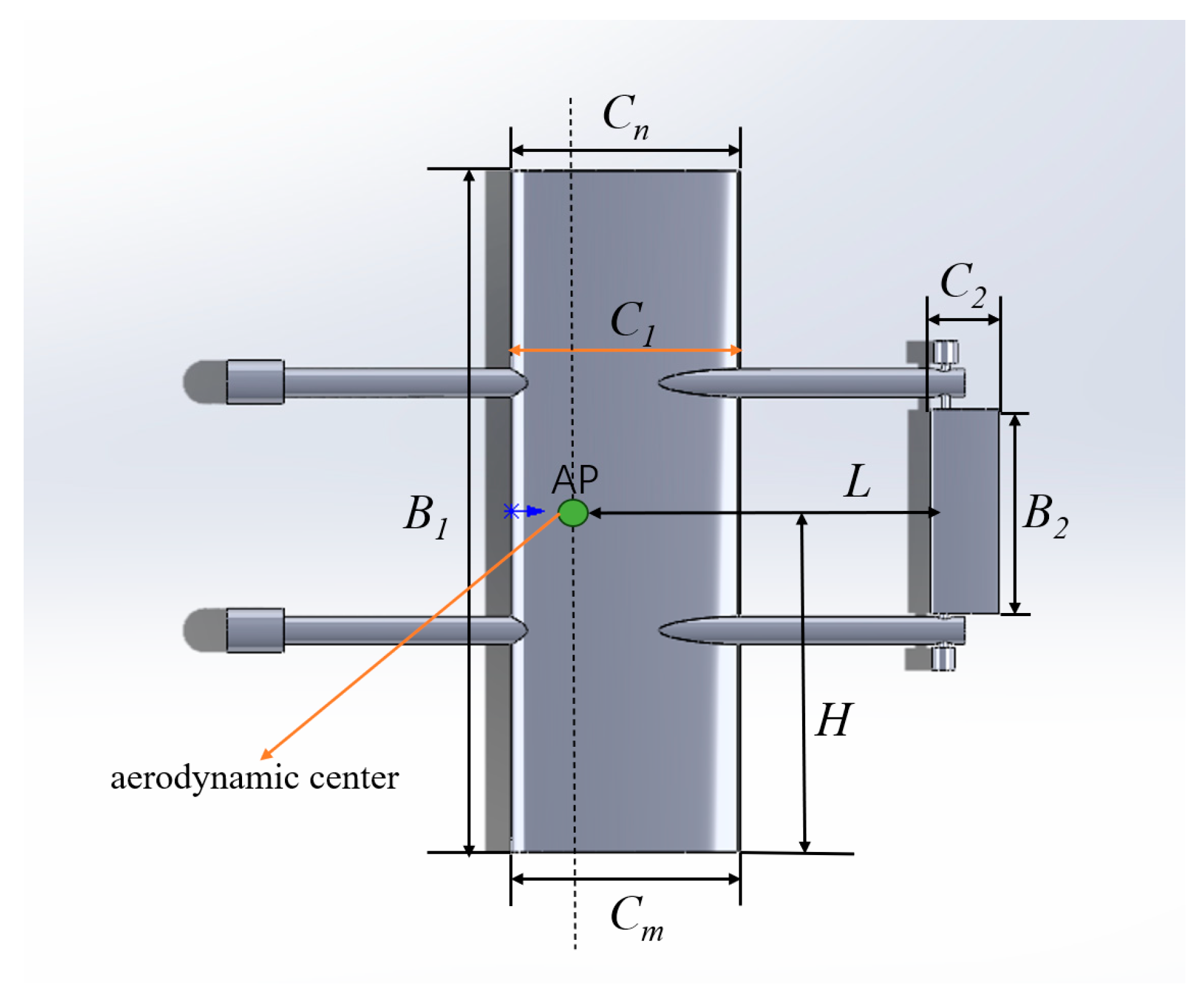
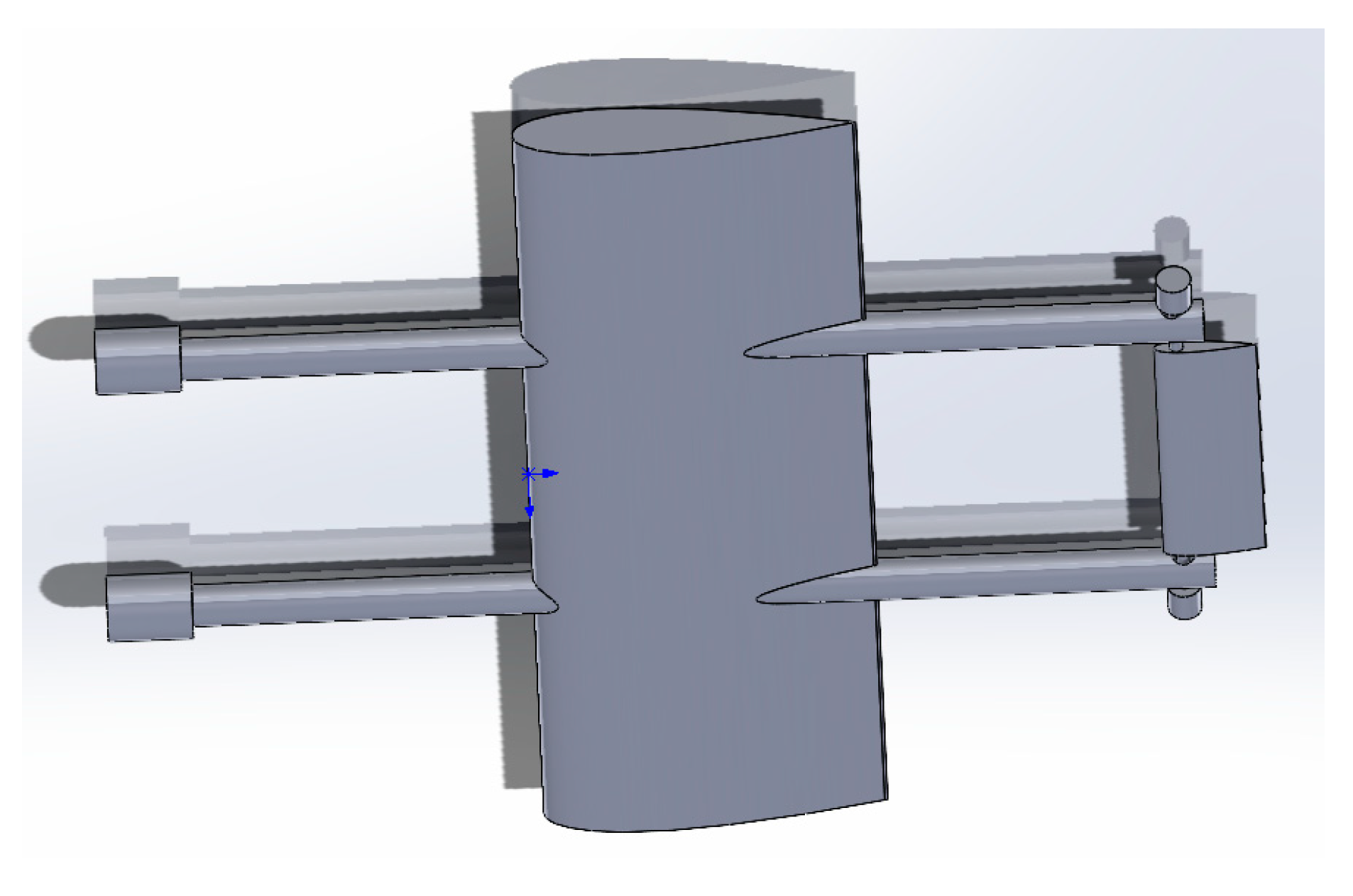
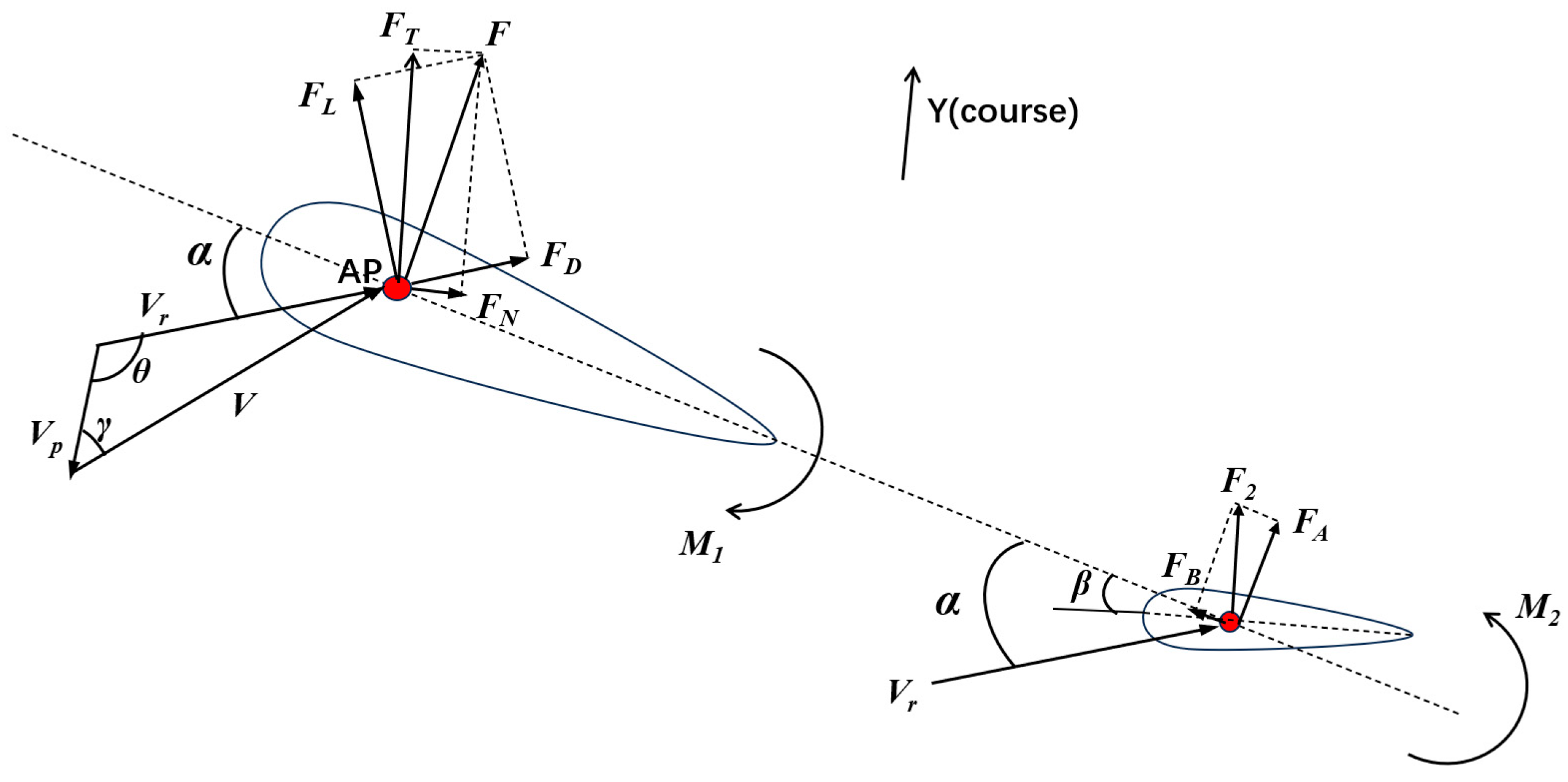

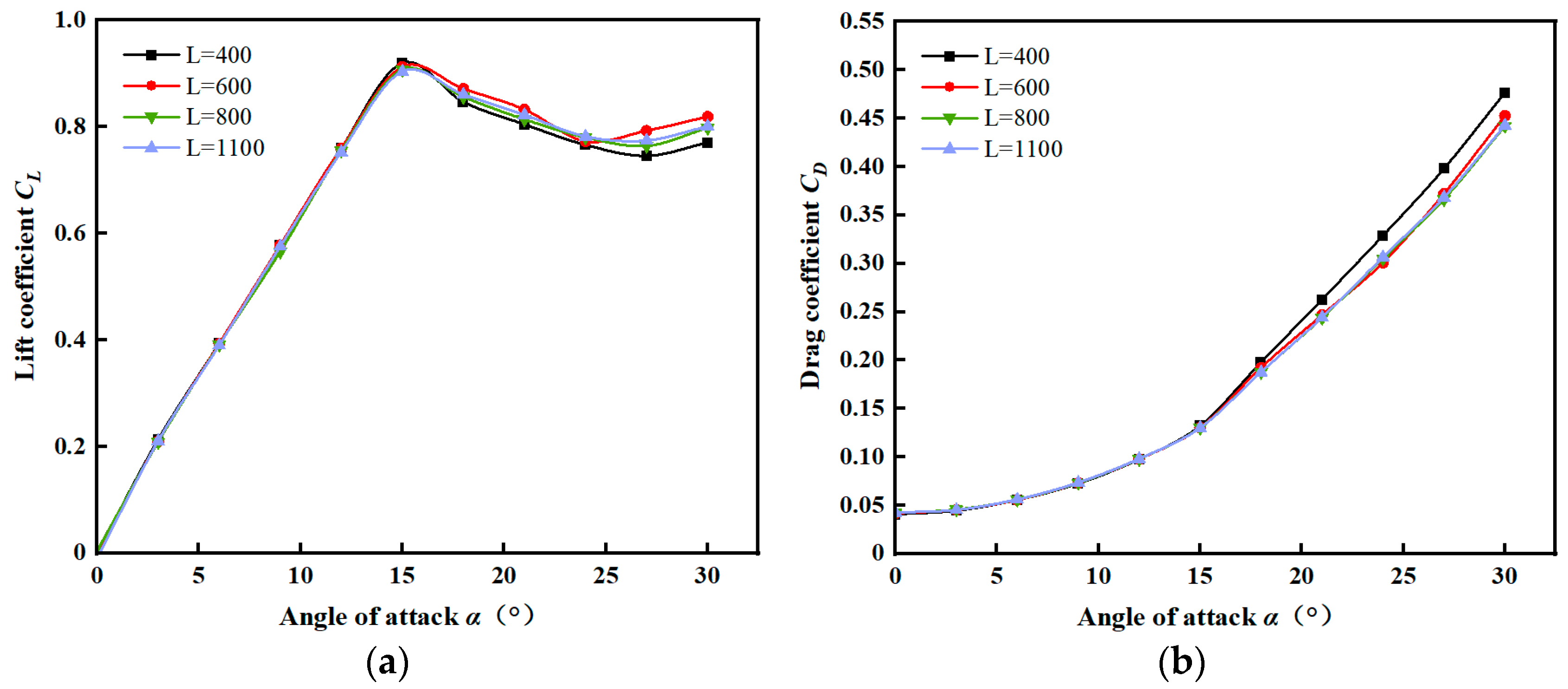

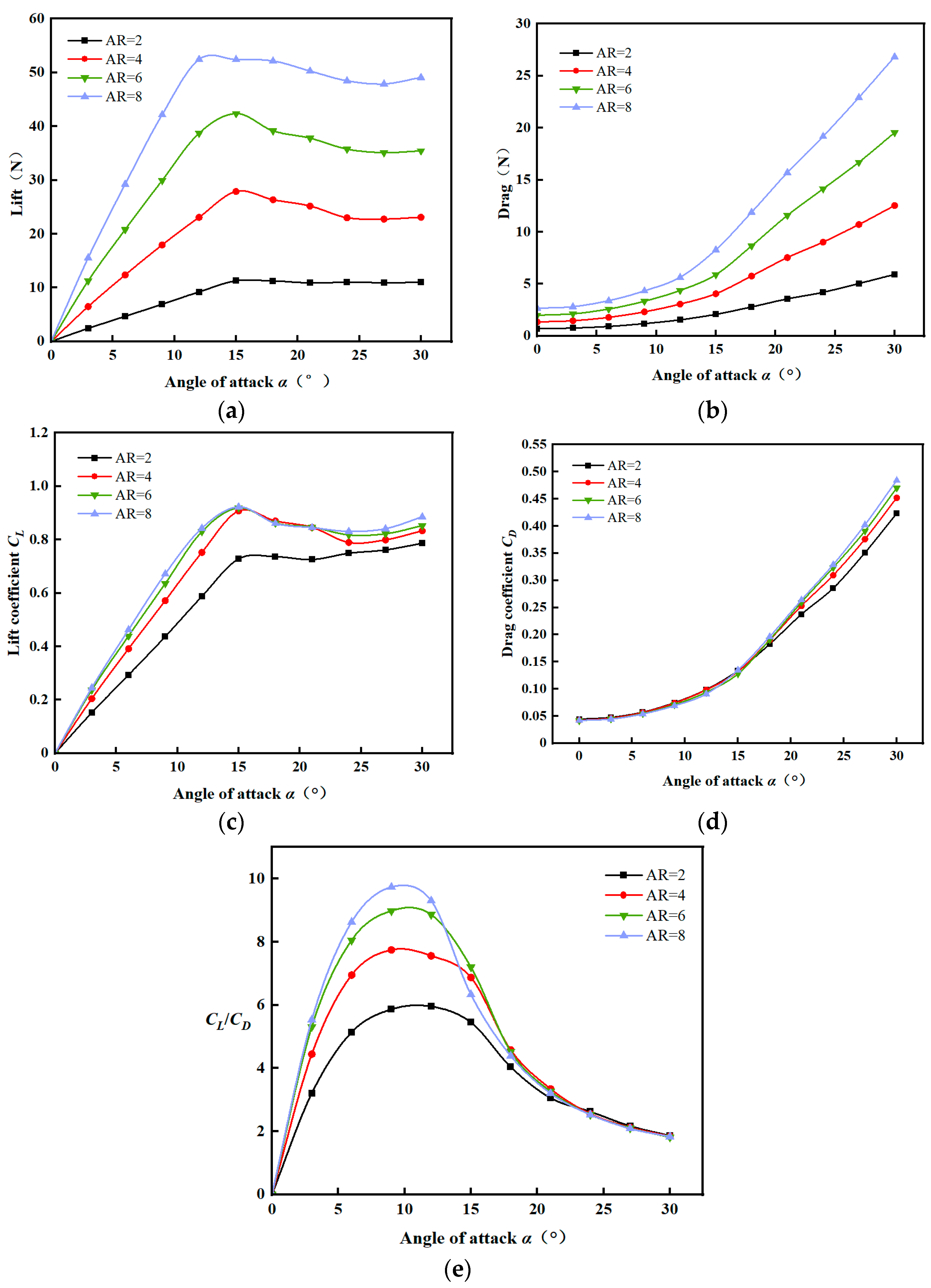
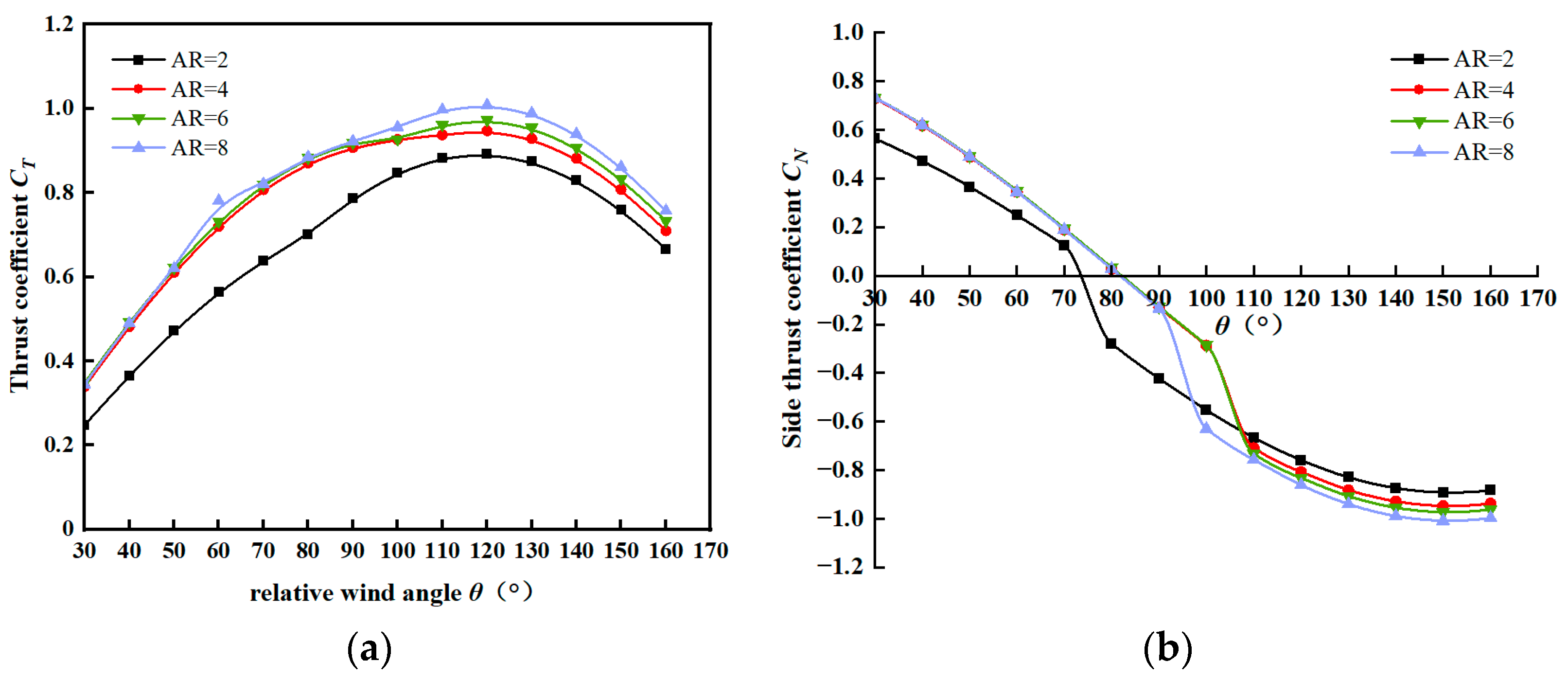

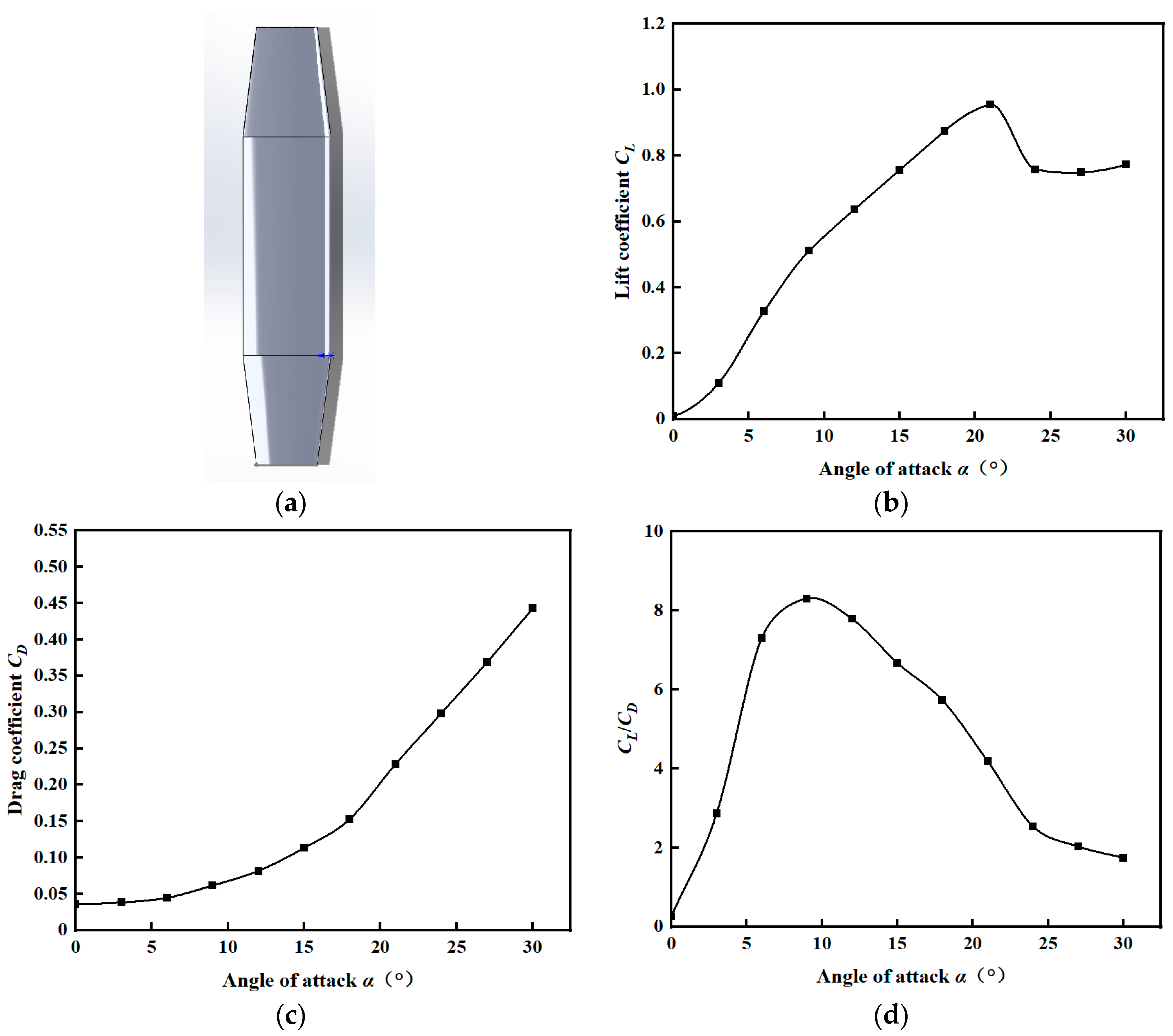

| Number of Meshes | Mainsail Lift Coefficient CL | Mainsail Drag Coefficient CD |
|---|---|---|
| 6 × 105 | 0.895 | 0.131 |
| 7.1 × 105 | 0.920 | 0.130 |
| 8.2 × 10 | 0.929 | 0.130 |
| 9.2 × 105 | 0.930 | 0.130 |
| 10.2 × 105 | 0.933 | 0.130 |
| 11.4 × 105 | 0.932 | 0.130 |
| 13.2 × 105 | 0.934 | 0.130 |
| Flow field velocity | 9 m/s |
| Angle of attack α | 0°, 3°, 6°, 9°, 12°, 15°, 18°, 21°, 24°, 27°, and 30° |
| Viscous equation | SST k-ω |
| Fluid domain material | Atmosphere |
| Calculated reference area | The projected area of the mainsail in the Y direction |
| Calculated reference length | 0.4 m |
| Solution method | Second-order SIMPLEC algorithm [23] |
| Reporting definitions | Lift, drag, lift coefficient, and drag coefficient |
| Number of iterations | 103 |
| Angle of Attack | Lift Coefficient of the Membrane Wing | Drag Coefficient of the Membrane Wing | Lift Coefficient of the Structure of this Paper | Drag Coefficient of the Structure of This Paper |
|---|---|---|---|---|
| 3° | 0.11 | 0.042 | 0.11 | 0.038 |
| 6° | 0.26 | 0.059 | 0.32 | 0.044 |
| 9° | 0.39 | 0.071 | 0.51 | 0.062 |
| 12° | 0.52 | 0.121 | 0.63 | 0.082 |
| 15° | 0.69 | 0.176 | 0.75 | 0.113 |
Disclaimer/Publisher’s Note: The statements, opinions and data contained in all publications are solely those of the individual author(s) and contributor(s) and not of MDPI and/or the editor(s). MDPI and/or the editor(s) disclaim responsibility for any injury to people or property resulting from any ideas, methods, instructions or products referred to in the content. |
© 2024 by the authors. Licensee MDPI, Basel, Switzerland. This article is an open access article distributed under the terms and conditions of the Creative Commons Attribution (CC BY) license (https://creativecommons.org/licenses/by/4.0/).
Share and Cite
Fang, S.; Tian, C.; Zhang, Y.; Xu, C.; Ding, T.; Wang, H.; Xia, T. Aerodynamic Analysis of Rigid Wing Sail Based on CFD Simulation for the Design of High-Performance Unmanned Sailboats. Mathematics 2024, 12, 2481. https://doi.org/10.3390/math12162481
Fang S, Tian C, Zhang Y, Xu C, Ding T, Wang H, Xia T. Aerodynamic Analysis of Rigid Wing Sail Based on CFD Simulation for the Design of High-Performance Unmanned Sailboats. Mathematics. 2024; 12(16):2481. https://doi.org/10.3390/math12162481
Chicago/Turabian StyleFang, Shipeng, Cunwei Tian, Yuqi Zhang, Changbin Xu, Tianci Ding, Huimin Wang, and Tao Xia. 2024. "Aerodynamic Analysis of Rigid Wing Sail Based on CFD Simulation for the Design of High-Performance Unmanned Sailboats" Mathematics 12, no. 16: 2481. https://doi.org/10.3390/math12162481




